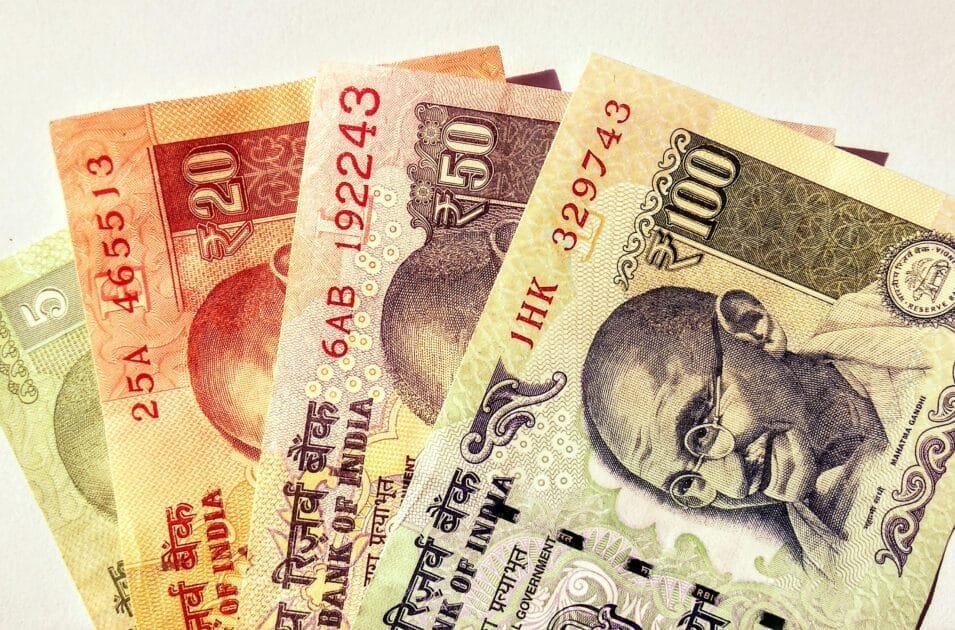India’s digital population is growing at an explosive rate, and so is its vulnerability to cyber fraud. From Aadhaar OTP scams to AI-powered deepfakes, cybercriminals are getting smarter in 2025.
As mobile usage increases, and as more of our critical information becomes linked to Aadhaar, PAN, mobile apps, and biometrics, India’s cybercrime infrastructure faces a massive test.
Today’s cyber threats are not just technical challenges-they are social, psychological, and even political. Criminals exploit our digital habits, fear, urgency, and trust in official systems.
Whether it’s a fraud call asking for your Aadhaar OTP, or a realistic deepfake video of a loved one asking for money, the emotional manipulation is as dangerous as the technology.
This guide is designed to not only inform but empower. By understanding how scams work, what laws exist, and what personal security steps are necessary, readers can stay ahead of evolving threats.

Aadhaar OTP Scam
Understanding Aadhaar OTP Scam
An Aadhaar OTP scam is a form of identity theft where fraudsters manipulate citizens into revealing the One-Time Password (OTP) that is generated when someone tries to authenticate their Aadhaar for banking, telecom, or subsidy services.
This OTP is the gateway to your:
- Bank accounts (especially linked with DBT and subsidies)
- SIM card verifications
- Loan applications
- E-KYC processes
What is an Aadhaar OTP Scam?
An Aadhaar OTP scam is a method of digital fraud where cybercriminals manipulate people into revealing the One-Time Password (OTP) sent by UIDAI when Aadhaar is used for authentication. The OTP is meant to verify identity but is increasingly being weaponized to commit serious financial and identity-based crimes.
A scammer may call, message, or email a user pretending to be from UIDAI, a telecom company, or a government welfare scheme. By fabricating a story — such as “your Aadhaar needs urgent re-verification,” or “you are eligible for a subsidy” — the fraudster tricks users into sharing the OTP sent to their phone.
Technical Insight: How the Scam Works
- The scammer visits a site (e.g., telecom KYC portal or e-wallet signup) and enters the victim’s Aadhaar number.
- UIDAI sends an OTP to the registered mobile number.
- The scammer calls the user, posing as an authority figure, and manipulates them into sharing that OTP.
- Using this OTP, the scammer authenticates the Aadhaar to link a SIM, open a bank account, or apply for loans.
UIDAI Tools for Public Safety
- Aadhaar Lock/Unlock: Lock your Aadhaar when not in use to prevent unauthorized eKYC attempts. Unlock temporarily when needed.
- Virtual ID (VID): Instead of giving your real Aadhaar number, generate a VID via UIDAI’s official portal or mAadhaar app.
- Aadhaar Authentication History: See where and when your Aadhaar was used for authentication by visiting https://resident.uidai.gov.in
Safety Guidelines for Citizens
- Never share Aadhaar OTP with anyone — even if the person claims to be from UIDAI, your bank, or government office.
- Lock your Aadhaar if not using it frequently.
- Use the mAadhaar app for secure access and real-time alerts.
- Report unauthorized Aadhaar use to UIDAI toll-free number 1947.
- Spread awareness in rural communities where digital literacy may be lower.
Government Initiatives and Campaigns
In 2024, UIDAI collaborated with the Ministry of Information & Broadcasting for a national media campaign, titled “Mera Aadhaar, Meri Pehchan, Meri Suraksha”, warning people not to share OTPs. Posters, radio jingles, and social media reels were widely circulated in Tier-2 and Tier-3 towns.
UIDAI is also exploring AI-based fraud detection models that can identify bulk authentication requests from high-risk geographies, auto-flagging potential misuse.
Myth vs Fact
| Myth | Fact |
|---|---|
| OTP is safe to share with UIDAI officials | UIDAI officials never ask for your OTP. It is only for YOU. |
| Aadhaar OTP only affects Aadhaar-related data | Wrong. OTP can be used to link bank accounts, open SIMs, and do KYC fraud. |
How It Happens
- Phishing Call: A fraudster calls you claiming to be from UIDAI, your bank, or a government scheme like PM Kisan or Ayushman Bharat.
- Urgency Created: They tell you that your Aadhaar will be deactivated or your benefits stopped unless verified immediately.
- OTP Request: You’re asked to provide the OTP sent to your phone.
- Misuse: That OTP is then used to either link your Aadhaar to another account or to commit financial fraud in your name.
Real-Life Case Study
In Jharkhand, 2024, a scammer impersonated a JIO executive and convinced villagers that their Aadhaar needed urgent re-verification. 27 individuals shared OTPs and later found that their Aadhaar was linked to multiple SIMs used in interstate crimes.
How to Stay Safe
- Lock your Aadhaar biometrics from UIDAI Aadhaar Services.
- Use Virtual IDs (VIDs) instead of your actual Aadhaar number.
- Ignore calls asking for OTP, regardless of urgency.
- Monitor Aadhaar authentication logs every 3 months.

Deepfake Scam 2025
What is a Deepfake Scam?
A deepfake scam uses AI-generated media to impersonate real people—visually and vocally—to deceive others for financial, reputational, or political gains.
In 2025, these scams have surged due to more accessible AI tools, image and voice cloning apps, and vast personal data available on social media.
Deepfakes are no longer just a curiosity-they are weapons. Fraudsters exploit public trust by cloning a family member’s face or voice to demand money urgently. Others use deepfakes to impersonate CEOs, political leaders, or government officials, manipulating people into acting against their interest.
How Are Deepfakes Created?
Modern deepfakes are powered by GANs (Generative Adversarial Networks) and voice synthesis models. Apps like HeyGen, ElevenLabs, and DeepFaceLab allow even low-tech users to:
- Create realistic videos from a single photo
- Clone a voice using a few seconds of audio
- Merge faces into live video calls
Most deepfake scams in India are spread via:
- WhatsApp Video Calls
- Telegram groups
- Email attachments or spoofed links
- Social media DMs (especially impersonating public figures)
How to Detect a Deepfake
- Watch for unnatural blinking, lip sync errors, and inconsistent lighting.
- Listen for voice lag or mismatched emotions.
- Use tools like:
Safety Measures to Avoid Deepfake Scams
- Verify via a second method: If you receive a video request for money, confirm by direct call.
- Set privacy on social media: Limit public access to your photos and videos.
- Educate employees and family: Especially children, elders, and corporate staff.
- Avoid oversharing: Birthday videos, interviews, vlogs, etc. can be used to train AI models.
Legal Angle: Deepfake Laws in India 2025
New sections added to the IT Act in 2025 include:
- Section 66K – Creation or distribution of synthetic media (deepfakes) with malicious intent: Up to 3 years imprisonment + ₹5 lakh fine.
- Section 66N – Deepfake impersonation of a public figure or government official: Up to 5 years + ₹10 lakh fine.
These laws also mandate platforms like YouTube and Instagram to:
- Label manipulated media
- Provide takedown options within 48 hours
- Use deepfake-detection algorithms
Expert Quote
“In a post-truth era, seeing is no longer believing. Deepfakes can break families, ruin reputations, and manipulate voters—all in a few clicks.”
— Rakesh Tiwari, Cyber Forensics Analyst, Delhi Police
Myth vs Fact
| Myth | Fact |
|---|---|
| Deepfakes are easy to spot | Advanced AI deepfakes are nearly indistinguishable without forensic tools. |
| Only celebrities are targeted | Common people, especially youth, are increasingly targeted. |
Statistics
- Over 4,500 deepfake-related complaints registered in India in Q1 2025.
- 61% of deepfake videos used voice cloning, 39% video manipulation.
- Women are 2.5x more likely to be targeted in deepfake blackmail scams.

Cybercrime Laws India 2025
India’s legal response to the rise in digital crimes has matured rapidly. Recognizing the complexity of modern cyberattacks, the Ministry of Electronics and Information Technology (MeitY), in collaboration with CERT-In and law enforcement agencies, has overhauled several existing laws under the IT Act, 2000. In 2025, a comprehensive digital security framework was introduced to make the law more adaptable, victim-centric, and tech-aware.
Key Features of the 2025 Legal Framework
- Categorization of Cybercrimes:
- Identity-related crimes (e.g. Aadhaar, PAN misuse)
- Financial fraud (e.g. UPI, SIM swap, fake loan apps)
- AI-related deception (deepfakes, voice clones)
- Cyberstalking, bullying, and privacy invasion
- Fast-track Digital Courts:
- Cybercrime cases to be disposed within 60–90 days.
- Video-based hearings with secure login for victims.
- Digital Evidence Acceptance:
- Deepfake detection reports, screen recordings, and cloud backups are admissible.
- Chain-of-custody protocols improved for WhatsApp chats, audio files, and device logs.
- Mandatory Reporting for Platforms:
- OTTs, social platforms, and telecoms are required to report verified fraudulent content within 24 hours.
- Failure leads to heavy penalties or blocking of services under national security clauses.
Sections Most Relevant to Common Users
| Section | Crime Type | Punishment |
|---|---|---|
| 66B | Unauthorized use of personal devices/data | Up to 3 years + ₹1 lakh fine |
| 66C | Identity theft using Aadhaar/PAN/UPI | Up to 5 years + ₹2 lakh fine |
| 66D | Impersonation using electronic means | Up to 7 years + ₹5 lakh fine |
| 66E | Violation of digital privacy (screenshots, etc.) | Up to 3 years + ₹2 lakh fine |
| 67A | Publishing fake pornographic deepfakes | Up to 7 years + ₹10 lakh fine |
Victim Support Improvements
- National Cyber Crime Reporting Portal (cybercrime.gov.in) now includes:
- AI chatbot for guidance
- Anonymity feature for reporting blackmail/extortion
- 24/7 helpline with regional language support (dial 1930)
- Legal Aid Cells: Each district is mandated to have a cyber-legal assistance desk to support low-income or senior citizen victims.
2025 Enforcement Data
- Over 1.8 lakh cyber complaints filed in the first half of 2025.
- 42% cases involved digital payment frauds.
- AI-assisted impersonation (deepfakes, voice clones) accounted for 11%.
- Cyber cells in 24 states equipped with facial recognition and data-tracing tools.
Government Awareness Drives
- Cyber Suraksha Week (Jan 2025): Workshops in schools, panchayats, and companies.
- Collaboration with Meta, Google, and Paytm to include scam alerts within apps.
- Posters and alerts circulated at railway stations, post offices, and mobile recharge shops.
Expert Note
“The only way to fight intelligent cybercrime is with intelligent cyberlaw.”
— Advocate Shalini Menon, Supreme Court Cyber Law Specialist

WhatsApp Scam Alerts
WhatsApp, with over 550 million users in India, has become a prime hunting ground for digital fraudsters. Scams now range from fake job offers and QR code traps to video call blackmail and fake prize messages. These scams often exploit people’s emotions—fear, urgency, trust, or greed.
WhatsApp scams are also hard to trace because of end-to-end encryption, allowing scammers to operate anonymously from anywhere in the world.
Common WhatsApp Scams in 2025
- Fake Business Account Traps: Scammers create verified-looking profiles (with logos and green checkmarks) and impersonate bank officials or courier companies. Victims are asked to “confirm details” and end up clicking phishing links.
- Job Offer Scams: Messages promising remote Amazon/Flipkart data entry jobs ask users to register via a Google Form and pay an “onboarding fee.” Once paid, the scammer disappears.
- Video Call Blackmail: A stranger makes a WhatsApp video call. As soon as the victim picks up, they are shown obscene visuals while their reaction is recorded. Minutes later, blackmail begins.
- WhatsApp Verification Code Hijack: Fraudsters trick users into sharing their WhatsApp 6-digit login code. Once given, scammers hijack the account and start messaging the victim’s contacts for money.
- Phishing via QR Codes: Scammers send QR codes disguised as refund or payment links. When scanned, the user unknowingly initiates a UPI debit from their own bank account.
Case Example: Kerala Doctor Loses ₹4.2 Lakh
In March 2025, a Kochi-based doctor received a WhatsApp message from someone posing as a childhood friend. They claimed to be stuck abroad and urgently requested a QR code payment. Trusting the message, the doctor scanned the code and lost over ₹4.2 lakh in multiple UPI transfers.
Impact on Users
- Elderly citizens often fall for “Your pension will stop” messages
- Youth are lured by work-from-home scams
- Women face blackmail and identity theft via fake video calls
Safety Tips for WhatsApp Users
- Never share OTPs or verification codes with anyone—even if it looks like a trusted contact.
- Avoid scanning QR codes received via WhatsApp unless verified in person.
- Turn on Two-Step Verification in WhatsApp settings.
- Report and block suspicious accounts immediately.
- Disable auto-download for media to avoid spyware-laden videos.
- Educate family members about rising scam tactics in local languages.
Tools and Features You Should Use
- Report + Block button (long-press on message)
- Privacy Settings > Profile photo > My Contacts
- Disappearing Messages for sensitive conversations
- End-to-End Encryption Notification for all new chats
WhatsApp’s Action Plan (2025)
- Collaborated with Indian government to auto-flag over 3 million scam accounts in Q1 2025
- Introduced blue double-check verification for official business accounts
- Deployed machine learning models to detect bulk forwarding and keyword-based fraud
What the Law Says
- Impersonating someone on WhatsApp is a criminal offense under Section 66D of the IT Act
- Blackmail via WhatsApp video call is punishable under IPC Section 384 and Section 67 of the IT Act
- QR code frauds are treated as digital banking fraud and fall under RBI’s grievance redressal mechanism
Myth vs Fact
| Myth | Fact |
|---|---|
| WhatsApp scams only happen to the elderly | Most victims in 2024–25 were aged between 18 and 35 |
| QR code is safe to scan | QR codes can initiate unauthorized payments, not just receive money |
Statistics
- WhatsApp-related frauds surged 78% in 2024 compared to 2023
- Over ₹600 crore lost in India via WhatsApp-based scams in the last 12 months
- 1 in 3 scams started through a forwarded message or fake group invite

How to Secure Your Digital Identity
Why Digital Identity Matters
In today’s hyperconnected world, your digital identity is your online fingerprint. It includes personal information like your Aadhaar number, mobile number, email, biometric data, passwords, social media presence, banking details, and even your behavior online.
Losing control over your digital identity can lead to financial fraud, social embarrassment, legal troubles, or even wrongful arrests in cases of stolen identity used in criminal activity.
Common Ways Digital Identity is Compromised
- Phishing emails or SMS (e.g. fake bank login pages)
- Public Wi-Fi interception
- Data breaches from poorly protected websites
- App permissions collecting excessive data
- Reusing the same password across platforms
12 Key Tips to Secure Your Digital Identity in 2025
- Enable Two-Factor Authentication (2FA) on all banking, email, and social apps.
- Use Strong, Unique Passwords: Avoid birthdays or pet names. Use password managers.
- Regularly Review App Permissions: Revoke access to apps that ask for unnecessary data.
- Check Aadhaar Authentication History monthly on UIDAI’s official website.
- Freeze Your Credit File: Useful for those who don’t need regular loan inquiries.
- Avoid Using Public Wi-Fi for banking, UPI, or login activities.
- Install Antivirus & Anti-Malware Tools on phones and PCs.
- Update Your OS and Apps Regularly: Patches fix security loopholes.
- Avoid Sharing Personal Details on Social Media: Even birth year can aid fraud.
- Be Careful with Face & Fingerprint Auth: Biometric leaks can’t be changed.
- Use a Secure VPN for sensitive browsing sessions.
- Educate Your Family: Children and elders are often easy targets.
Tools & Resources You Can Use
- https://haveibeenpwned.com: Check if your email or phone has been breached
- https://uidai.gov.in: Aadhaar safety features
- https://cybercrime.gov.in: Report fraud, especially digital identity theft
Secure Your Devices
- Always use PIN, password, or biometric lock
- Enable remote lock & wipe feature (Find My Device / iCloud)
- Backup important data to encrypted cloud storage
What If You’re Already a Victim?
- Immediately change all passwords
- Contact your bank and freeze accounts if needed
- File an FIR at the nearest cyber police station
- Report the incident at cybercrime.gov.in
- Alert close contacts about possible impersonation
Myth vs Fact
| Myth | Fact |
|---|---|
| “I have nothing to hide, so I’m safe.” | Even basic info like your phone number can be exploited. |
| “Biometrics are foolproof.” | If leaked once, biometrics can’t be changed. Use cautiously. |
Quick Stats
- Over 68% of digital fraud victims in India reused the same password across 3+ accounts.
- 41% were unaware that their Aadhaar was used until they saw unauthorized activity.
- More than 70% of teens in urban India overshare personal information online.



